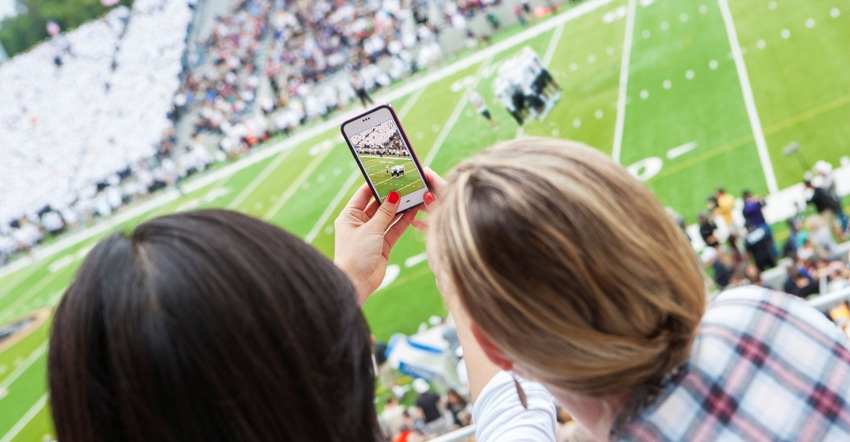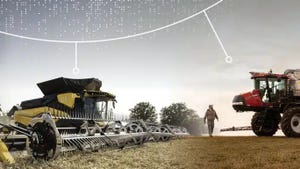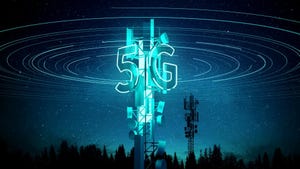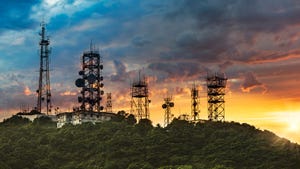Boosting fan experience - monetizing the ‘Connected Stadium’
Monetizing venues beyond ticket prices and stadium advertising will be essential, especially to enhance the “fan experience” through wireless mobility in soccer or football stadiums, cricket grounds, basketball arenas, race tracks, and large amphitheaters.
October 28, 2015

Telecoms.com periodically invites expert third parties to share their views on the industry’s most pressing issues. In this piece Adam Alevy of Laird explores the demand for, and opportunities presented by, improved stadium connectivity.
Imagine watching your favorite American Football player take the field this weekend wearing only a leather helmet and some thin shoulder pads. You’d probably think it was some kind of joke. You certainly wouldn’t expect anyone to play professional sports using outdated equipment… why then should fans be okay with the outdated and under-performing wireless experience inside so many stadiums across the world?
This is no joke. Okay you might say, but Adam, a player using outdated equipment is a safety issue whereas, fans having poor connectivity is a convenience issue. That’s true. But think of it this way, in the event of a severe weather situation, medical emergency, or public safety event, sending the right information to the specific fans most impacted would also help improve fan safety. That’s just one of three ways a Connected Stadium introduces a new era for fans, stadium operators, and players.
Still think this concept is over-hyped? Industry analyst Market Research predicts there will be 8.5 billion connected phones, tablets, and other devices worldwide by 2019. That’s one for every human being alive. That means nearly every fan inside a sports stadium or concert venue will not only have a wireless device with them.
It’s a safe bet that all of those fans will want to check that wireless device at least once during the event to share the experience, look up a statistic, or just see what their friends are up to. If sports teams and venue owners are not prepared to serve this captive audience, then they certainly cannot benefit from the new sources of information and revenue this audience presents.
Monetizing their venues beyond ticket prices and stadium advertising will be essential, especially to enhance the “fan experience” through wireless mobility in soccer or football stadiums, cricket grounds, basketball arenas, race tracks, and large amphitheaters. In America and Latin America, baseball stadiums also would benefit in becoming supercharged bastions of wireless connectivity.
The Fan Experience
Consumers worldwide today are already enjoying the benefits of Wi-Fi through their smart devices to digitally interact with members of their go-to social channels, and sharing LIVE action video and photos with friends during games.
But, when 50,000-to-80,000 people start using their smart phones and tablets in high-density environments under one roof – places like stadiums, arenas, convention centers and the like – today, their hopes of being able to “connect” and “share” are usually dashed because available bandwidth falls far short of the demand and moves more slowly than the lines at the concession stands.
Much like the thirst for connectivity, professional sports and live concerts are both exploding in terms of world-wide popularity. That’s one of the many reasons more than 110 giant sports stadiums and entertainment venues are being built or are proposed for construction over the next few years in the Americas, Europe, Asia and the Middle East. Consistent coverage and capacity across the entire venue is a key issue for these new venues and even for today’s stadium owners and sports spectators.
Fans and concert-goers expect – or demand — in-hand and streamlined access to instant replays, an immersive half-time entertainment experience, and even real-time voting on the Play or Player of the Game, or the “Man of the Match,” all through their smart devices.
A vital part of attending a large sporting or concert event nowadays is the ability for the spectator to share their experience with the outside world via social media platforms such as Facebook, Twitter, Instagram, Tumblr and YouTube. It’s clear that social networking will continue to play an important part in the evolution of the connected stadium, and could potentially even carve out a role in sports programming and brand management.
How long will it be before players themselves wear or carry cameras and share live action video with fans in the stands? Why not? How long will it be before fans can actually select a different camera angle to see the game action rather than being limited by the physical view from their seat?
Replays, close-ups, side-action on the bench and other views the official TV cameras usually don’t capture could be seen and recorded by fans from the stands or the sidelines. So, why not share those shots and videos with others as well?
The connected stadium also involves the streamlined and regular provisioning of video content, which should be part of the future value proposition provided by stadium administrators. The venue administrators also can wirelessly update scoreboards and post other stadium signage for fans through a robust antenna system.
Consistent Venue Coverage
Before a venue can provide consistent coverage and extend the fan experience beyond game day, wireless signals must be strong throughout every corner of the building. Yet the “shape” of RF signals can cause black spots in the front and back edges of the stadium, causing fans there to feel short-changed or venue staff to miss an important cue or message.
Enterprise-grade connectivity is also essential for stadium restaurants and administrative staff who require fast, reliable service to process charges, manage inventories, or send alerts during medical emergencies.
Just like baseball teams will adjust their field position for specific batters (“playing the shift”), a Distributed Antenna System (or DAS) can be customized to fit the size, shape, and materials of specific stadiums to enable a uniform wireless signal. This maximizes frequency re-use and system capacity to better cope with varying bandwidth demands.
Aesthetics also play an important role in the branding and overall experience of a stadium. That’s why new innovations are being leveraged to provide “low profile” omnidirectional antennas. These can minimize the visual impact of the infrastructure for fans preserving the look of the venue.
New Revenue-Generating Opportunities
By providing an immersive and digital experience through wireless networks, stadium administrators can provide a greater fan experience, but they also can generate new revenue opportunities.
For example, as brands increasingly look to deliver a great “brand experience,” the connected stadium provides an ideal platform for brands to effectively promote their products among targeted audiences.
In the future, venues also can capture behavioral and location-based data to provide a more streamlined spectator experience. With robust real-time data, for example, a craft beer company could funnel its ads to selected fans, and invite them to visit the craft beer stand located directly behind their section in the stadium.
Maybe tee-shirt vendors could zero-in on concert-goers who refer wearing band-branded shirts, caps and other items sold inside the amphitheater or concert hall.
The possibilities are endless as brands begin to redefine the meaning of “direct marketing” by advertising products directly to the spectator’s hands through their mobile devices.
Venues could even host pre or post event updates showing sponsored “live” images of batting practice, stage construction, or sound checks. By connecting with the fans outside of the venue, owners can also gather valuable information from fans such as demographics, contact lists, or food suggestions.
Creating a connected stadium opens doors for more mobile advertising, more venue sponsors, and better patron information. Venues that leverage this concept early can capture the added revenue and leverage it to ensure reasonable ticket prices, stadium offerings, and help cover player or performer contracts.
For the time being, however, without fully-functioning and high bandwidth network capacity, many venues across the world are taking to the field with outdated equipment. That means targeted digital advertising and fan-player-performer interaction is still largely a pipe dream for venue owners and operators and fans are likely to start taking notice of the venues which don’t support the viewing experience they have come to expect.
So, as the more than 110 giant sports stadiums and entertainment venues are built over the next few years around the globe, smart owners of sports and entertainment venues should consider pushing the envelope to ensure fans, advertisers, and vendors alike can capitalize on the evolving wireless connectivity to enhance the fan experience and create a whole new game.
Adam Alevy is the Vice President of Technology for Laird PLC’s Infrastructure Antenna Systems group. He has nearly 30 years of experience designing and managing the development of antennas for telecom, Wi-Fi, and military applications, including radars and satellite communications terminals. He joined Laird in 1998, and has managed Laird’s antenna technology team since 2007. Adam graduated from Northeastern University in Boston with a B.S. in Electrical Engineering. Laird is a major supplier of wireless solutions to major venues, stadiums and event managers around the world.
Read more about:
DiscussionAbout the Author(s)
You May Also Like








.png?width=300&auto=webp&quality=80&disable=upscale)


_1.jpg?width=300&auto=webp&quality=80&disable=upscale)


.png?width=800&auto=webp&quality=80&disable=upscale)